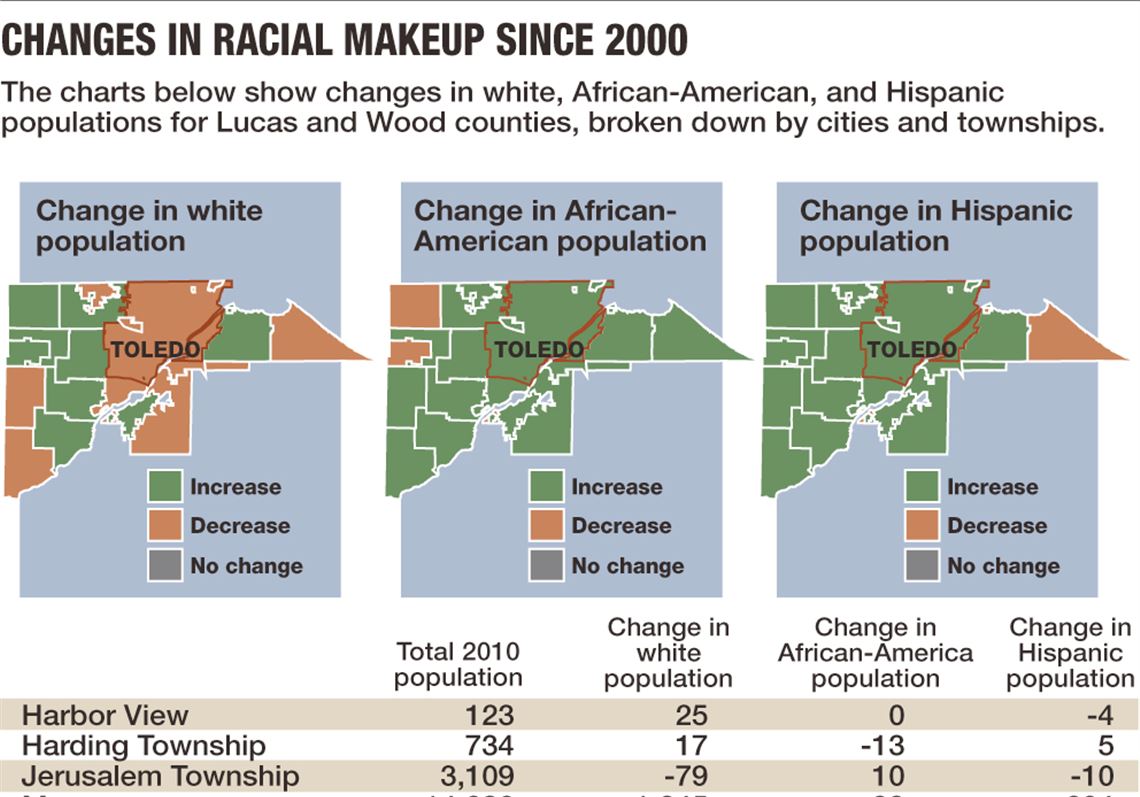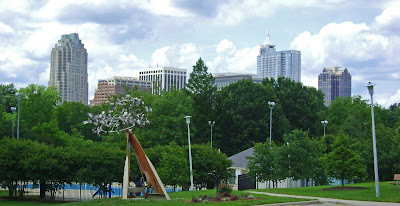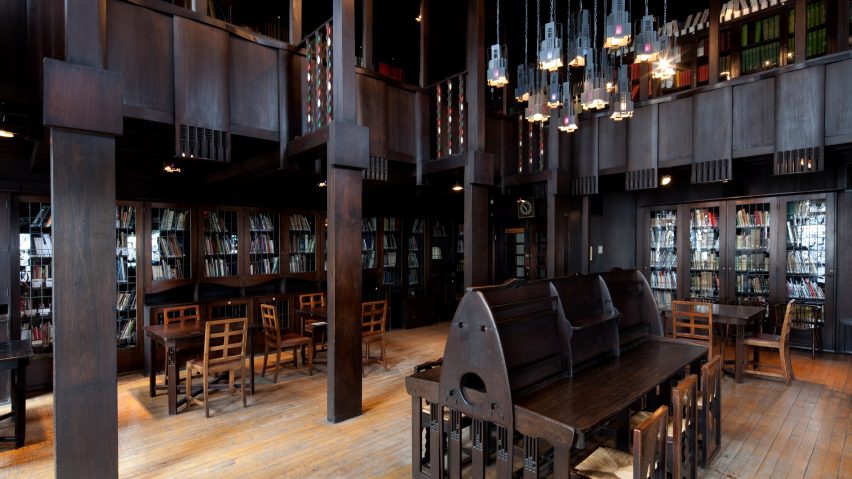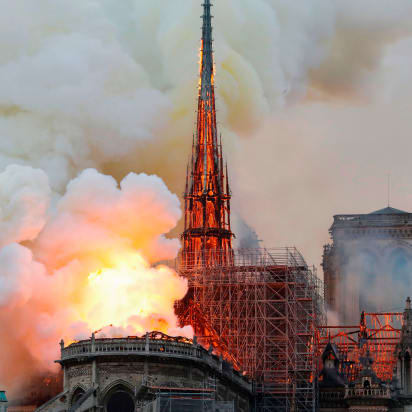| Raleigh, North Carolina raleighnc.gov |
Emily Badger, Quoctrung Bui, and Robert Gebelofft report, "Here, and in the center of cities across the United States, a kind of demographic change most often associated with gentrifying parts of New York and Washington has been accelerating. White residents are increasingly moving into nonwhite neighborhoods, largely African-American ones" (nytimes.com; Apr. 27, 2019; date accessed Apr. 29, 2019).
It sounds a little strange when you consider that in America, racial diversity often occurs in white neighborhoods, not the other way around. The authors cite "Between 1980- and 2000, more than 98 percent of census tracts that grew more diverse did in that way, as Hispanic, Asian-American and African-American families settled in neighborhoods that were once predominantly white" (Ibid). However, after 2000 this fact changed.
 |
| Changing racial demographics in Toledo, Ohio toledoblade.com |
Since 2000, "according to an analysis of demographic and housing data, the arrival of white residents is now changing nonwhite communities in cities of all sizes, affecting about one in six predominantly African-American census tracts" (Ibid). This trend, albeit a modest one, is playing out across the nation in ways that shake up the housing market, the architecture, the value of land. Whatever the city, one thing is consistent, "a map of racial change shows predominantly growing whiter, while suburban neighborhood neighborhoods that were once largely white are experiencing an increased share of black, Hispanic and Asian-American residents" (Ibid)
 |
| Black-white housing patterns in Raleigh, North Carolina www4.uwm.edu |
As White Suburbs Grow More Diverse, Nonwhite City Centers Grow More White
At the beginning of the 21st Century, Nonwhite urban center neighborhoods were relatively low-income and 80 percent were predominantly African American. However, as downtowns came back to life, attracting more affluent residents with their central location, white home buyers arrived with incomes "on the average twice as high as that of their existing neighbors, and two-third higher than existing homeowners. And they are getting a majority of the mortgages" (Ibid)
The income disparity is not as obvious in the suburban neighborhoods with a growing Latino, African American, and Asian American population. Minority borrowers in the suburban communities have incomes that are similar to their new neighbors. Therefore, they receive mortgages proportionate to that of their neighbors.
| U.S. Inequality nextcity.org |
For example, in the lovely neighborhood of South Park in Raleigh, "...the white home buyers who have recently moved in have average incomes more than three tunes that of the typical household already here" (Ibid). Prior to 2000, whites barely registered as residents but by 2012, they composed 17 percent of the South Park's neighborhoods. Since then, they received 90 percent of the mortgages.
| South Park home Raleigh, North Carolina raleighrealtyhomes.com |
In communities like South Park, white residents are also changing the economics of the real estate. Kia E. Baker told The Times,
That's what finally came to me--it's not just the fact that the neighborhoods look different, that people behave differently,... (Ibid)
Ms. Baker grew up in southeast Raleigh and runs the nonprofit Southeast Raleigh Promise. She admitted that some of the changes are positive. Her realization was not:
Our black bodies literally have less economic value than the body of a white person...As soon as a white body moves into the same space that I occupies, all of a sudden this place is more valuable...(Ibid)
White flight and return are not opposite manifestations occurring in American cities, generations apart. In Raleigh, they are chapters in the same story.
In communities where white households are relocating, reinvestment is possible because the of prior disinvestment. Many of these neighborhoods were once legally segregated (books.wwnorton.com; date accessed Apr. 29, 2019), redlined by financial institutions. Their infrastructure was neglected by the municipality. Federal highway project laid out roadways that isolated them and housing projects were concentrated in these communities. Kofi Boone, a professor at North Carolina State University College of Design, told The Times,
A single-family detached house with a yard within a mile of downtown in any other part of the world is probably the most expensive place to live.
That history made it a bargain. This still remains somewhat true in South Park, the disinvestment-reinvestment cycle is evident on either side of any street.
| Shaw University shaw.edu |
South Park grew around the historically black college Shaw University (shaw.edu; date accessed Apr. 29, 2019), founded in 1865, and trained African American professors and professionals and home to dozens of black-owned businesses.
Over time, disinvestment took place: "Two major roads severed the neighborhoods; absentee landlords came in; a cherished park built in the 1930s began to deteriorate" (nytimes.com; Apr. 27, 2019). Previously excluded from suburbs, African Americans began to migrate to the community. The longtime residents who have remained are now worried that community's reinvention will remove the last vestiges of its history. Lonnette Williams spoke to The Times,
We don't want to feel like everything is so bad you've got to rear it down,....We want people to value out neighborhood.
Ms. Williams' sense of value is different and often at odds with the rising cost of real estate. Her stately 1922 two-story home is appreciating in value but that means little to her because she no intention of selling it. The half million dollar modern homes, in her opinion, detract from the neighborhood's value.
Octavia Rainey, another area long time resident, calls them Gone With the Wind houses, beach houses, slave houses, a reference to the second-story porches going up around her are reminiscent of the overseer's perches (Ibid). The pace of construction has picked up as have the volume of mailers residents are receiving: We pay $CASH$. As is ! No cost or fees! Sometimes the mailers arrive, disguised as bills headed for collection THIRD NOTICE (Ibid). Amidst the frenzy, a real estate agent told Rosalind Blair Sands that she was not using her property to its fullest potential. Ms. Sands operates a child development center. Everyone has a price as the message Ms. Sands heard and she Rosalind found herself battling over the math of what a child is worth.
 |
| South Park neighborhood park Raleigh, North Carolina raleighsouthpark.blogspot.com |
The rise of a new market
African Americans have remained segregated primarily because white residents generally avoided buying homes in black neighborhoods (russellsage.org; date accessed Apr. 30, 2019). What changed? "How did the first developer to renovate a home know a new market would be waiting for it?" (nytimes.com; Apr. 27, 2019) Jason Queen, a developer in Raleigh, told The Times,
I guess the answer is I didn't know...But I did know that I wanted to be in downtown (Ibid)
Mr. Queen previously worked in historic preservation and rehabilitated and built about 100 homes in the historic corridor east of downtown Raleigh, beginning with the house he and wife lived in; renovated on the fringes of South Park about ten years ago. Mr. Queen was a market of one: "He rejected long car commutes and cul-de-sacs. This part of the city was more affordable than anywhere near downtown. And he wanted diversity" (Ibid). Jason Queen, who is white, said,
What I didn't want to do is move to a neighborhood where all the kids look exactly as my kids,... I didn't think that was the right thing to do. (Ibid)
Cities, like preferences, change over time. In this case, they are are enmeshed. Crime has dropped since redevelopment began in South Park. Public housing blocks have been replaced by mixed-income housing and cities reinvested in long neglected downtown areas. The spike in home prices in the early naughts also left middle class home owners looking for an affordable place to live. By this time, many of white working class neighborhoods in good locations had gentrified. Predominantly African American and Latino communities remained untouched.
Older housing stock close to city centers were also approaching the end of their lifespans. Syracuse University economist Stuart Rosenthal argues "that it's often possible to predict a neighborhood's income level 20 years into the future by the age of its housing stock today" (Ibid). The older the home, the more likely it is to be replaced. Typical of the American housing market, newly built or renovated houses go to higher income households.
| Gated home for rent Raleigh, North Carolina rentals.com |
Thus, South Park was in position to become wealthier: "Many of the houses had lost nearly all their value, as the land underneath them grew more valuable" (Ibid). In the aftermath of housing implosion, mortgage leading grew tighter especially for African American and Latino buyer (urban.org; Apr. 8, 2015; date accessed Apr. 30, 2019). White home buyers received more desirable terms and by the time lenders began working with minority buyers, the communities were priced out of their reach. Jason Queen's clients are part of the process, even if they place a premium on the community's diversity.
For example, Andrew and Kelly Hudgins, a white couple, purchased one of Mr. Queen's homes in 2017 in South Park. They considered the racial map of Raleigh when they first arrived in the area. They saw that the white dots did not overwhelm the area, but they were concerned that they were part of the gentrification process. Mr. Hudgins, who works for two faith based non-profits, said,
We struggled with that for a long time,... If we didn't, somebody else was definitely going to buy that home. (nytimes.com; Apr. 27, 2019)
Perhaps another couple would place more value on South Park's potential, or what it has been historically. In the two years since, they have celebrated holidays with their neighbors and their children play with each other. From their porch swing they hung to get to know their neighbors, they have witnessed four homes cleared for redevelopment.
| Ship of Zion Church outreach shipoutreach.org |
The Ship of Zion Church and Community Center operates a small grocery store and gym in South Park. Pastor Chris Jones occasionally tries to flag down a white jogger and invite them in to check out the facilities. Those Airpods permanently embedded in the joggers' ears keep them from noticing Pastor Jones. Integration has not been successful. Pastor Jones believes that this will be the story of the neighborhood:
You have a half-million dollar home next to a home that's maybe $20,000. I wish that could stay. I wish those families could get to know each,... But because of economics, that can't happen. (nytimes.com; Apr. 27, 2019)
A mere eight blocks away, Jason Queen recently opened his latest development, the Transfer Food Hall which will eventually have a grocery store next door. The food hall and full service market aims to serve everyone from shoppers receiving social benefits to those more upscale shoppers who just have to have a $12 glass of green juice.
However, even this newest food emporium faces an uncertain future. Mr. Queen said, "The development was designed to make viable the grocery store the community wanted" (Ibid). The Transfer Food Hall has not attracted some of the long term residents who are waiting to see what the prices are like. For its part, the food hall is signalling that everyone is welcome, too-- inside there is a painting of a pair of African American teens from the community--but the residents must walk past the brand new $700,000 row homes to get to the food hall.
As good as these intentions are, they are insufficient in managing change and often wind up adding to it. The Transfer Food Hall will make South Park more desirable in turn attracting dubious house flippers and property scouts. Even the city's attempts to invest in formerly neglected neighborhoods can exacerbate the situation.
Raleigh's planning director Ken Bowers told The New York Times,
The city is always the battleground; when it was failing, that was a problem, and now that it's succeeding, that's also a problem. (Ibid)
er whether the city was delivering equal services and infrastructure. Mr. Bowers added,
Now the debate we're having is 'Are these parks gentrifying the neighborhood?'... That's a very dysfunctional place to be. (Ibid)
In the suburbs, a far different process is driving the population change, as middle class minority families look for more space or better schools, as immigrant neighborhoods take hold, or as families get priced out of the city. This type of increased integration brings its own set of challenges. At least among these homeowners there is a sense of stability and security in fact that the new households economically resemble their neighbors.
Kia E. Baker recently bought a home in a suburb east of the city, among the collection of blue tracts. She calls her community extremely divers and has no reason to believe that the diversity of today will result in a different kind of segregation in the future. New York University professor Ingrid Gould Ellen said, "Ideally... America could get to a place where the real estate market in any location isn't so sensitive to signals about race" (Ibid) Prof. Ellen said,
We made some progress by getting to a point where the entry of one black family did not signal that, 'Oh my god, this is a neighborhood that's going to fall apart,'... Maybe we can get to a point where the entry of one white family is not a signal that, 'This is a neighborhood that's going to have million-dollar condos.' (Ibid)
Near downtown Raleigh, a signal like that seems to have been sent and reception has been mixed. The future remains uncertain but what is certain that slowly but steadily the American real estate market will reach a point where no one is wringing their hands in despair, lamenting "There goes the neighborhood."

